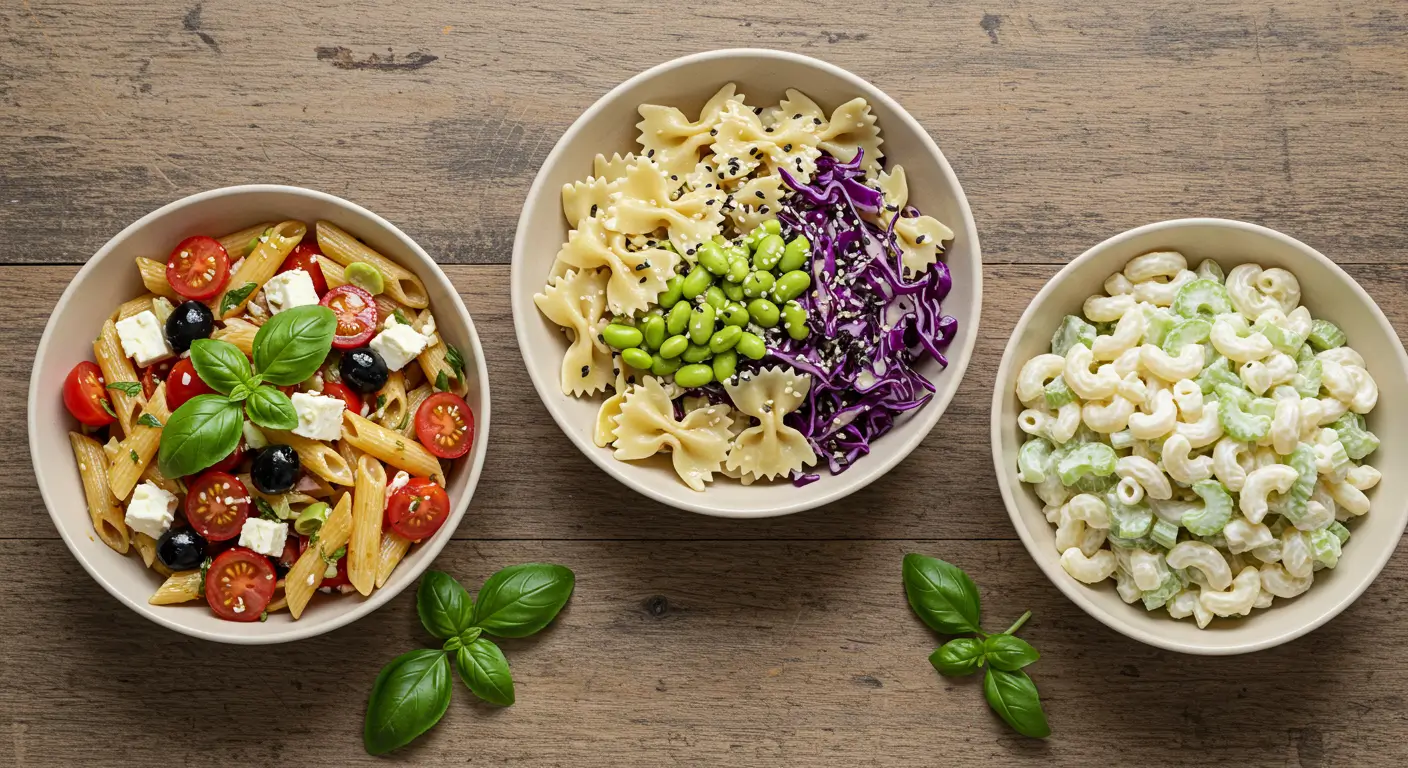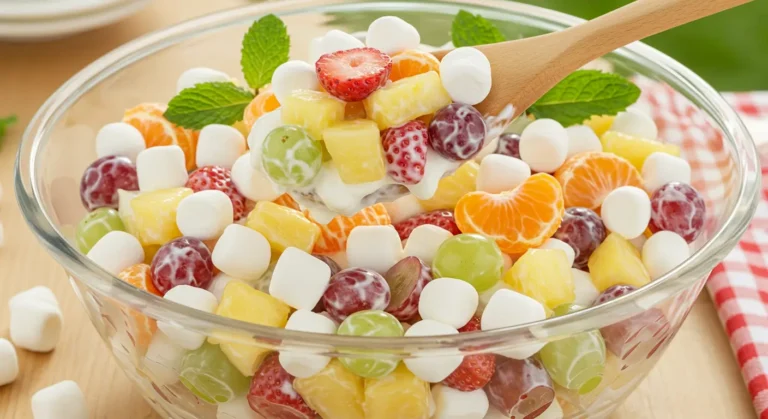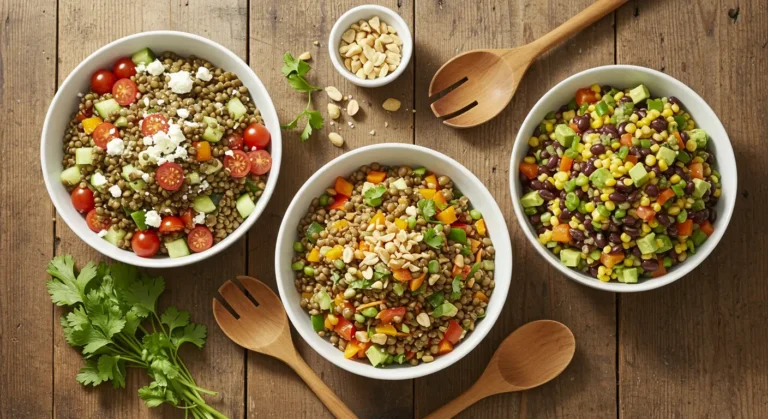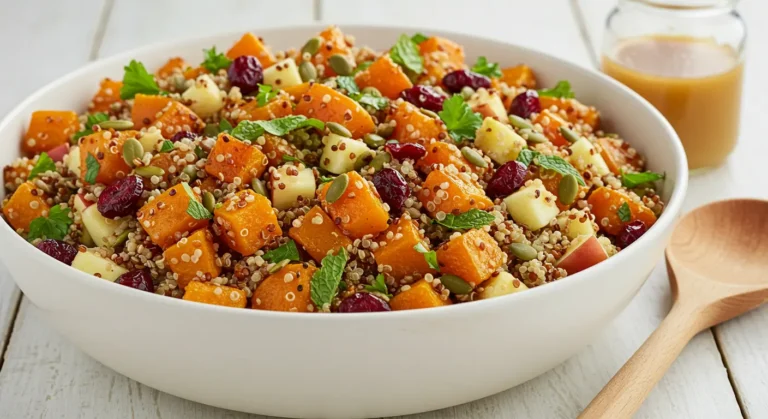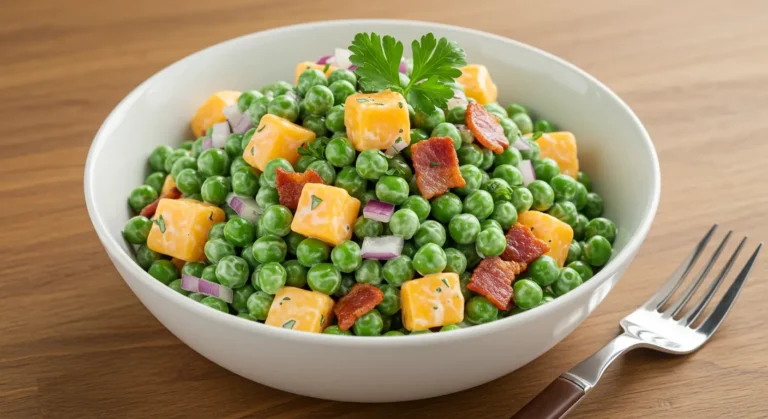Pasta Salad: 3 Fresh Recipes You’ll Love
Why do most home cooks struggle to create pasta salad that maintains its vibrant flavors and perfect texture beyond the first day of preparation? The challenge lies in understanding the delicate balance between pasta absorption, dressing distribution, and ingredient timing that professional chefs have mastered. This comprehensive guide presents three distinct pasta salad variations that deliver exceptional taste and visual appeal. Whether you’re planning a summer barbecue, meal prep sessions, or potluck contributions, these tested recipes provide reliable solutions that consistently impress guests and family members alike.
Table of Contents
Ingredients List
salad
Mediterranean Pasta Salad:
- 1 pound penne pasta (or rotini for better dressing adherence)
- 2 cups cherry tomatoes, halved (burst with sweet-tart flavor)
- 1 cup kalamata olives, pitted and halved
- 8 oz feta cheese, crumbled (creamy, tangy richness)
- 1 large cucumber, diced (crisp, refreshing crunch)
- 1/2 red onion, thinly sliced (sharp bite that mellows)
- 1/3 cup olive oil (fruity, peppery notes)
- 1/4 cup red wine vinegar
- 2 tsp dried oregano
- Fresh basil leaves (aromatic, peppery finish)
Asian-Inspired Pasta Salad:
- 1 pound bow tie pasta (captures dressing beautifully)
- 2 cups shredded cabbage (purple and green mix)
- 1 cup edamame, shelled (protein-rich, nutty flavor)
- 1 red bell pepper, julienned
- 1/2 cup toasted sesame seeds
- 3 green onions, chopped
- 1/4 cup rice vinegar (mild, clean acidity)
- 3 tbsp soy sauce (umami depth)
- 2 tbsp sesame oil (nutty, aromatic)
- 1 tbsp honey (balancing sweetness)
Classic American Pasta Salad:
- 1 pound elbow macaroni (traditional shape holds ingredients)
- 1 cup celery, diced (essential crunch factor)
- 1/2 cup red bell pepper, diced
- 1/4 cup red onion, finely chopped
- 1 cup frozen peas, thawed
- 3/4 cup mayonnaise (creamy base)
- 2 tbsp apple cider vinegar
- 1 tsp Dijon mustard
- Hard-boiled eggs, optional (protein enhancement)
Substitution Options: Replace regular pasta with whole wheat or chickpea varieties for added nutrition, swap mayo for Greek yogurt in creamy versions, or use nutritional yeast instead of cheese for vegan adaptations.
Timing
This pasta salad collection requires strategic timing to achieve optimal flavors and textures across all three variations.
- Pasta Cooking Time: 8-12 minutes (depending on shape and desired firmness)
- Prep Time: 25 minutes
- Assembly Time: 15 minutes
- Chilling Time: 2-4 hours
- Total Active Time: 40 minutes
- Total Time Including Chilling: 4 hours 40 minutes
Step-by-Step Instructions
Step 1: Perfect Pasta Preparation
Cook your chosen pasta in generously salted water until al dente, following package directions but testing 1-2 minutes early. The key to exceptional pasta salad lies in slightly undercooking the pasta since it continues absorbing liquid as it cools. Drain thoroughly and rinse with cold water to stop the cooking process immediately, ensuring your pasta maintains the ideal texture.
Step 2: Mediterranean Magic Assembly
Combine the cooled penne with halved cherry tomatoes, allowing their natural juices to begin creating flavor layers. Add crumbled feta, olives, and cucumber for textural contrast. Whisk together olive oil, red wine vinegar, and oregano to create an emulsified dressing that coats every ingredient evenly. Toss gently but thoroughly to ensure even distribution.
Step 3: Asian Fusion Creation
Mix the bow tie pasta with crisp cabbage and edamame for protein punch. The combination of textures creates visual appeal while delivering nutritional balance. Prepare the Asian-inspired dressing by whisking rice vinegar, soy sauce, sesame oil, and honey until completely smooth. The honey helps emulsify the oil while balancing the saltiness.
Step 4: Classic Comfort Combination
Fold together the elbow macaroni with diced celery and bell peppers, ensuring even vegetable distribution throughout. Create the creamy dressing by combining mayonnaise, apple cider vinegar, and Dijon mustard, whisking until smooth and uniform. This classic combination provides the nostalgic flavors that make this salad recipe a crowd-pleaser at any gathering.
Step 5: Final Integration and Chilling
For all three variations, perform a final gentle toss to ensure complete dressing coverage. Transfer to airtight containers and refrigerate for at least 2 hours, allowing the flavors to develop complexity. Before serving, taste and adjust seasoning as needed, since chilled foods often require slight seasoning boosts.
Nutritional Information
For a serving of this pasta salad (based on 1-cup portions), you’ll receive substantial nutritional value with variations depending on the chosen recipe:
Mediterranean Version:
- Calories: 285
- Protein: 9g
- Carbohydrates: 32g
- Fat: 14g
- Fiber: 3g
- Sodium: 420mg
- Vitamin C: 15mg
- Calcium: 120mg
Asian-Inspired Version:
- Calories: 265
- Protein: 11g
- Carbohydrates: 35g
- Fat: 9g
- Fiber: 4g
- Sodium: 380mg
- Vitamin K: 45mcg
- Folate: 35mcg
Classic American Version:
- Calories: 320
- Protein: 8g
- Carbohydrates: 38g
- Fat: 16g
- Fiber: 2g
- Sodium: 290mg
- Vitamin A: 850IU
- Iron: 2mg
Healthier Alternatives for the Recipe
Transform your pasta salad into a healthier version with these modifications that enhance nutritional density while maintaining satisfying flavors and appealing textures:
- Whole Grain Boost: Replace regular pasta with whole wheat, quinoa, or chickpea varieties for increased fiber and protein content
- Greek Yogurt Swap: Substitute half the mayonnaise with plain Greek yogurt for probiotics and reduced calories
- Vegetable Volume: Double the vegetable content while reducing pasta by 25% to increase nutrient density significantly
- Healthy Fat Enhancement: Add avocado, nuts, or seeds for omega-3 fatty acids and sustained energy
- Sodium Reduction: Use herb blends and citrus juice instead of salt-heavy dressings and processed ingredients
- Protein Power: Include grilled chicken, chickpeas, or hard-boiled eggs for complete amino acid profiles
- Antioxidant Addition: Incorporate colorful vegetables like purple cabbage, bell peppers, and cherry tomatoes for diverse phytonutrients
Serving Suggestions
Elevate your pasta salad experience with these ideas that transform simple ingredients into memorable dining occasions suitable for various settings and preferences:
- Temperature Contrast: Serve chilled pasta salad alongside warm grilled proteins for textural and temperature variety
- Portion Versatility: Present in individual mason jars for portable lunches or elegant single-serving presentations
- Garnish Enhancement: Top with fresh herbs, toasted nuts, or extra cheese just before serving for visual appeal
- Seasonal Adaptation: Incorporate seasonal vegetables like roasted butternut squash in fall or fresh corn in summer
- Bread Pairing: Accompany with crusty artisan bread or garlic breadsticks for a complete meal experience
- Platter Presentation: Arrange on large platters with complementary colors and garnishes for buffet-style serving
- Make-Ahead Strategy: Prepare components separately and assemble just before serving for optimal freshness and texture
Common Mistakes to Avoid
Master this pasta salad by avoiding these pitfalls that can compromise texture, flavor development, and overall dining satisfaction:
- Overcooking Pasta: Mushy pasta absorbs too much dressing and creates unpleasant texture that cannot be corrected
- Under-seasoning: Cold foods require more seasoning than hot dishes, so taste and adjust before final serving
- Inadequate Chilling Time: Rushing the chilling process prevents proper flavor melding and ingredient integration
- Overdressing Initially: Adding all dressing at once can result in soggy salad since pasta continues absorbing liquid
- Ignoring Ingredient Timing: Adding delicate ingredients too early can cause wilting and textural degradation
- Skipping Salt in Pasta Water: Unsalted pasta water produces bland pasta that no amount of dressing can fully correct
- Wrong Pasta Shapes: Smooth pasta shapes don’t hold dressing well compared to textured varieties with ridges and curves
Storing Tips for the Recipe
Preserve the freshness of your pasta salad with these strategies that maintain optimal texture and prevent food safety issues during storage:
- Airtight Container Storage: Use glass or plastic containers with tight-fitting lids to prevent moisture loss and odor absorption
- Refrigerator Placement: Store in the main refrigerator compartment, not the door, for consistent temperature maintenance
- Dressing Separation: Keep extra dressing separate and add small amounts before serving to refresh flavors
- Maximum Storage Time: Consume within 3-5 days for optimal safety and quality, depending on ingredients used
- Freezing Considerations: Most pasta salads don’t freeze well due to mayonnaise and vegetable texture changes
- Pre-Serving Revival: Allow refrigerated salad to sit at room temperature for 15 minutes before serving for better flavors
- Component Storage: Store delicate garnishes separately and add just before serving to maintain crispness
Conclusion
These three pasta salad variations offer distinct flavor profiles that cater to different preferences while utilizing fundamental techniques that ensure consistent success. The Mediterranean version delivers bright, herb-forward notes, the Asian-inspired recipe provides umami depth, and the classic American style offers comforting familiarity. Each recipe emphasizes proper pasta cooking, strategic ingredient timing, and appropriate chilling for optimal results.
Ready to create your perfect pasta salad? Try one of these tested recipes and share your results in the comments below – we’d love to hear which variation becomes your new favorite!
FAQs
What’s the best pasta shape for salad recipes? Short pasta shapes with ridges or curves work best because they hold dressing effectively. Penne, rotini, bow ties, and shells are excellent choices that provide good sauce adherence.
How do I prevent my pasta salad from becoming dry? Reserve some dressing separately and add small amounts before serving. Pasta continues absorbing liquid as it sits, so refreshing with additional dressing maintains proper moisture levels.
Can I substitute mayonnaise in pasta salad recipes? Absolutely! Greek yogurt, avocado-based dressings, or olive oil vinaigrettes work well as substitutes. Each creates different flavor profiles while maintaining the creamy or coating properties needed.
What vegetables work best in pasta salad? Firm vegetables that maintain texture when chilled work best: bell peppers, celery, cucumber, cherry tomatoes, and red onion. Avoid vegetables that release excessive water or become mushy quickly.
How long can pasta salad sit out at room temperature? For food safety, pasta salad should not remain at room temperature longer than 2 hours, or 1 hour when ambient temperature exceeds 90°F. Keep chilled until ready to serve.
Can I add protein to these pasta salad recipes? Yes, grilled chicken, hard-boiled eggs, chickpeas, or cheese enhance protein content. Add proteins just before serving or store separately to maintain optimal texture and prevent contamination.
Your Feedback Matters
There are no reviews yet. Be the first one to write one.

